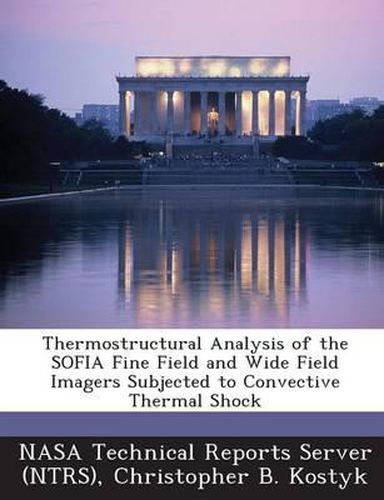Readings Newsletter
Become a Readings Member to make your shopping experience even easier.
Sign in or sign up for free!
You’re not far away from qualifying for FREE standard shipping within Australia
You’ve qualified for FREE standard shipping within Australia
The cart is loading…






The Stratospheric Observatory For Infrared Astronomy (SOFIA) is a highly modified Boeing 747-SP with a 17- ton infrared telescope installed in the aft portion of the aircraft. Unlike ground- and space-based platforms, SOFIA can deploy to make observations anytime, anywhere, in the world. The originally designed aircraft configuration included a ground pre-cool system, however, due to various factors in the history of the project, that system was not installed. This lack of ground pre-cooling was the source of the concern about whether or not the imagers would be exposed to a potentially unsafe thermostructural environment. This concern was in addition to the already-existing concern of some project members that the air temperature rate of change during flight (both at the same altitude as well as ascent or descent) could cause the imagers to be exposed to an unsafe thermostructural environment. Four optical components were identified as the components of concern: two of higher concern (one in each imager), and two of lower concern (one in each imager). The analysis effort began by analyzing one component, after which the analyses for the other components was deemed unnecessary. The purpose of this report is to document these findings as well as lessons learned from the effort.
$9.00 standard shipping within Australia
FREE standard shipping within Australia for orders over $100.00
Express & International shipping calculated at checkout
The Stratospheric Observatory For Infrared Astronomy (SOFIA) is a highly modified Boeing 747-SP with a 17- ton infrared telescope installed in the aft portion of the aircraft. Unlike ground- and space-based platforms, SOFIA can deploy to make observations anytime, anywhere, in the world. The originally designed aircraft configuration included a ground pre-cool system, however, due to various factors in the history of the project, that system was not installed. This lack of ground pre-cooling was the source of the concern about whether or not the imagers would be exposed to a potentially unsafe thermostructural environment. This concern was in addition to the already-existing concern of some project members that the air temperature rate of change during flight (both at the same altitude as well as ascent or descent) could cause the imagers to be exposed to an unsafe thermostructural environment. Four optical components were identified as the components of concern: two of higher concern (one in each imager), and two of lower concern (one in each imager). The analysis effort began by analyzing one component, after which the analyses for the other components was deemed unnecessary. The purpose of this report is to document these findings as well as lessons learned from the effort.